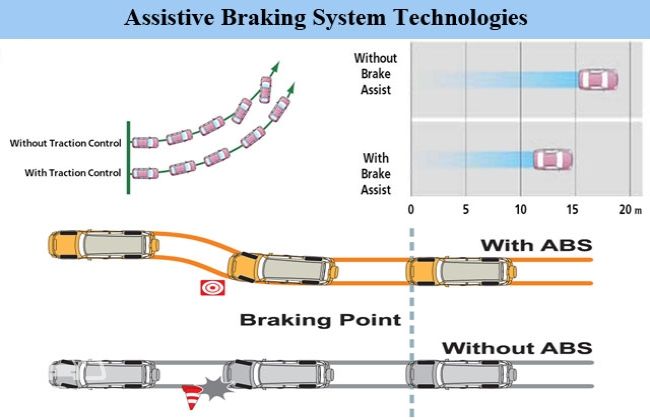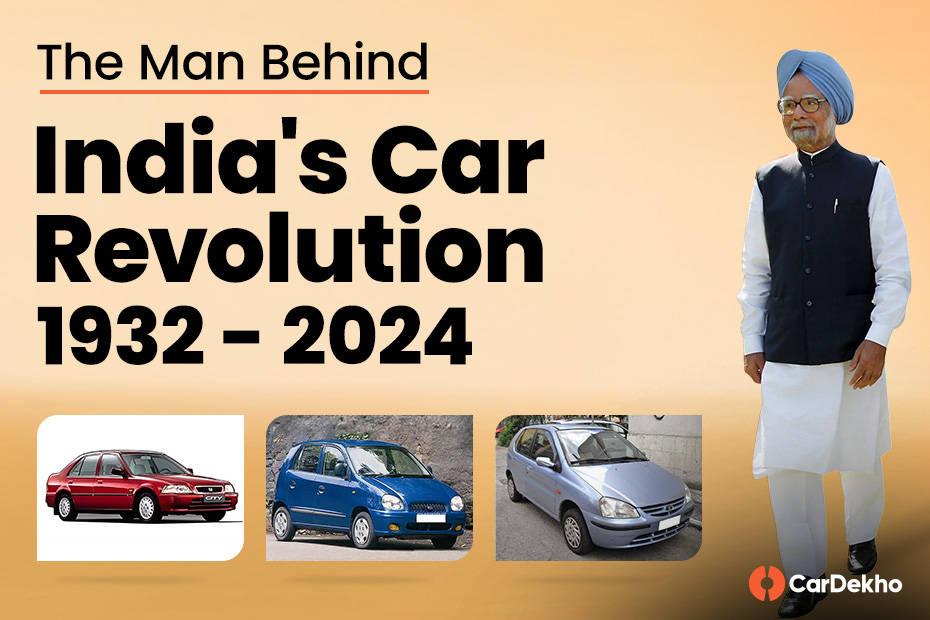Assisted braking system technologies
Published On Feb 27, 2015 10:54 AM By Firdaus
- 1.4K Views
- Write a comment
Assisted braking system technologies

Braking technology for automobiles is constantly evolving. There was a point of time when automobiles solely relied on drum and disc brakes to come to halt, and emergency braking often led to scary moments leaving one with goosebumps. But this has changed and today’s automobile brakes are as advanced as F1 technology; with systems such as ABS being most common along with technologies such as Electronic Stability Program (ESP), Traction Control (TC), Electronic Brake Assist (EBA) car brakes today offer protection to drivers enhancing their overall experience. We elaborate on some of the braking technologies commonly used on cars today.
Anti Lock Brakes (ABS)

This braking technology is the most common one seen on road going cars. Most manufacturers in India offer them on their top of the line variants and debate is on to make ABS as well as airbags compulsory on all cars in India, irrespective of the trim line. Anti-lock brakes as the name suggest prevent your car brakes from locking up in case of emergency or sudden braking, they regulate the pressure on each wheel enabling the driver to steer in the intended direction.
The anti-lock brake system consists of the following components:
- Hydraulic Control Unit (HCU).
- Anti-lock brake control module.
- Front anti-lock brake sensors / rear anti-lock brake sensors.
The rear anti-lock brakes work the front brakes of the car, while the front anti-lock brakes work the rear brakes of the car. When the brakes are applied, the fluid flows from the master cylinder (HCU) and is directed towards a wheel about to lock; this information is provided by sensors. Once the accelerating wheel comes back to normal speed, the fluid flow to that wheel is stopped via valves. Most ABS systems kick into action once the vehicle crosses speeds of over 20kmph. In case of failure of ABS, the normal braking ability of the car remains unaffected.
Electronic Stability Program (ESP)
ESP is another computer operated system that provides the driver better control of the vehicles especially around corners. Electronic Stability Program was first developed by automobile giant Bosch and the Mercedes-Benz S-Class and the BMW 7 series were among the first cars to use this pioneering technology.
Electronic Stability Program (ESP) corrects the understeer (When the car keeps moving front than turn) and oversteer (when the car turns more than what the driver intends). It works in sync with the car’s other systems like ABS and traction
control to correct the course of the car. Sensors in the car detect the loss of traction of a wheel, and automatically apply the brakes to the designated wheel to correct the steer of the car. Some ESP systems also reduce the power of the engine till the car regains control. ESP systems react much faster at detecting loss of traction than human drivers and are most useful around corners. Most cars today come with ESP that can be turned off to engage in the occasional drifting fun.
Traction Control

Traction control is another system with works in coordination with the other braking systems and the computer of the car. It detects the loss of grip via sensors on a particular wheel and then redirects power to the wheel with a lack of it or by inducing braking. When the traction control computer (often incorporated into another control unit, such as the ABS module) detects one or more driven wheels spinning significantly faster than another, it invokes the ABS electronic control unit to apply brake friction to wheels spinning with lessened traction.
Components of traction control
- Each wheel on the car comes with a sensor which detects the loss in speed/grip due to traction
- The sensed information/speed is passed to the ECU
- The ECU processes this information and initiates braking on the affected wheel
Electronic Brake Assist

Electronic brake assists helps bring the car to standstill much sooner than cars without them, especially in cases of emergency braking. Again this works in combination with ABS to make braking as effective as possible eliminating the risk of getting steered in the undesired direction and preventing brake locking.
An EBA system uses an ECU that compares the braking instances to pre-set thresholds. If the driver pushes the brakes down hard and fast enough to pass the threshold, the ECU then determines if this is an emergency and then boosts the braking power. Modern drive by wire vehicles have EBA installed.










